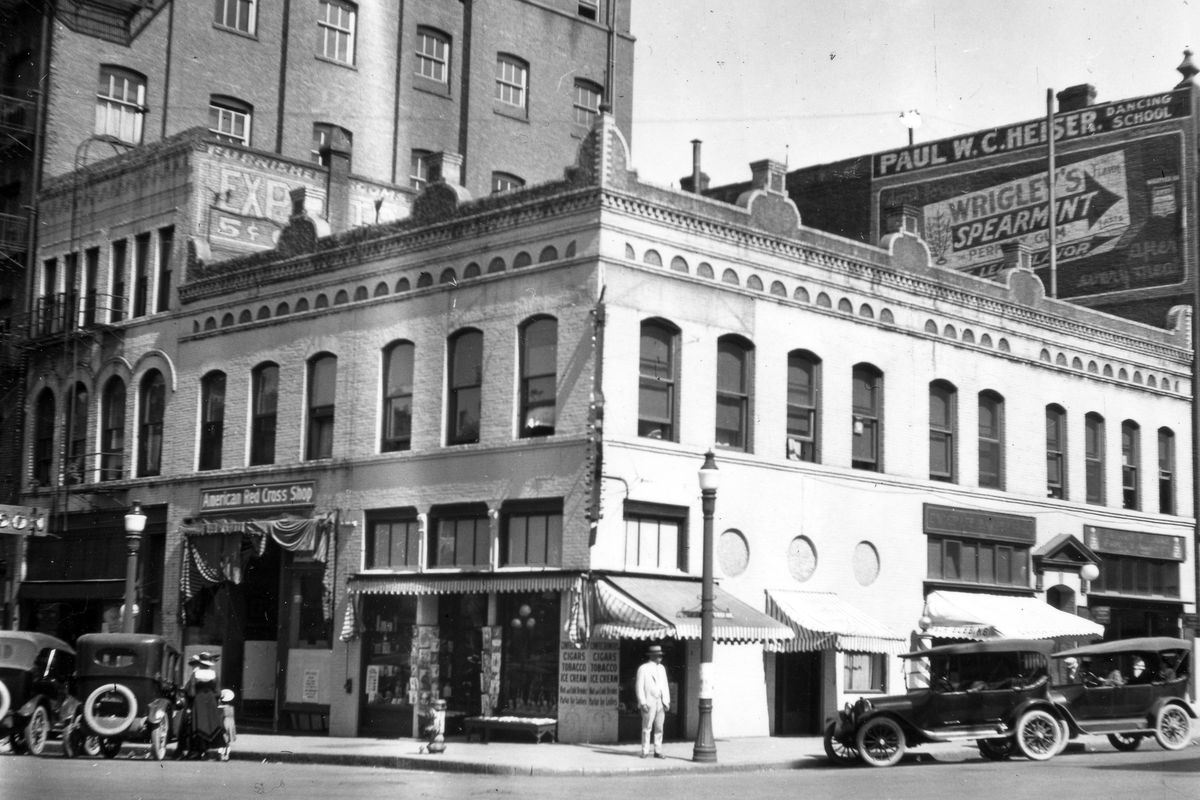Then and Now: Red Cross ‘sacrifice shop’

Clara Barton, the nurse called the “Angel of the Battlefield” during the Civil War, founded the American Red Cross in 1881. She was known to charge onto the battlefield, even before Army medics arrived, to give aid to the wounded.
In the aftermath of the war, Barton helped wounded soldiers find their families, organized volunteers to make clothing and stockpiled relief supplies. Slowly, new chapters were started in communities across the nation. Volunteers stocked disaster supplies and taught first aid and water sanitation.
Spokane’s chapter first met July 11, 1898, at Westminster Congregational Church and enrolled 173 members. Their first project was to send socks, towels, soap and other toiletries to local Army units en route to fight the Spanish-American War in the Philippines. After the war, patriotic volunteers decorated graves of the fallen.
The Red Cross in Spokane and nationwide grew exponentially as America entered World War I. Across the nation, just over 100 chapters in 1914 grew to almost 4,000 by 1918. In Eastern Washington, volunteers swung into action by raising money, training nurses, knitting socks and sending care packages to soldiers. In rural areas, people gleaned fruit and canned jam to be sent to military recovery wards.
At war’s end, the American Red Cross had more than 30 million adult and junior members. In 1918, the Spokane chapter opened a “sacrifice shop,” a thrift store, in downtown Spokane. Staffed with volunteers, the group turned the steady donations into cash, as many charities do today. Thrift stores have become common in Spokane, generating money for the Salvation Army, Catholic Charities, Volunteers of America and the Union Gospel Mission.
During the Great Depression, the local Red Cross milled wheat and gathered food for the needy. During World War II, they operated blood drives, manufactured bandages and provided aid stations to traveling servicemen. The top brass of the Army and Navy requested 6 million pints of blood for the war effort in 1944, and the Red Cross opened dozens of new donation centers to meet the need. One Navy pharmacist’s mate treating injured men on Guadalcanal told the Red Cross that the donated blood and plasma was a morale booster. “You hear a kid say, ‘I guess that last shot was a blonde. It sure picked me up!’ ”
Today, the Inland Empire chapter of Spokane provides disaster relief following fires and floods, water safety and CPR training, support for military personnel and other services.
– Jesse Tinsley